Comparison of solid steel SCM440H and S45C
SCM440H steel grade is considered to be the solution to the limitations of S45C steel. So let's find out what is the difference between SCM440H and S45C solid steel?
Previously, carbon steel such as S45C was used quite popular. However, the hardness of S45C suffers from disadvantages that are very brittle and brittle, and wear quickly. Since then, new manufacturers have improved the S45C carbon steel line to a new level by reducing the carbon content and adding the chromium - molybdenum component to create the SCM440H steel line.
So what is the difference between SCM440H and S45C solid steel?
1. Overview of SCM440H and S45C steel
a. SCM440H steel
- SCM440H steel is manufactured according to Japanese standard JIS 4052. With the main component of chromium - molybdenum, SCM440H steel has the ability to withstand oxidative corrosion, good heat resistance, very good tensile strength.
- SCM440H steel is often used as gears, operating shafts and hand tools, mechanical engineering, ...

What is the difference between SCM440H and S45C solid steel?
b. S45C steel
- S45C steel is a type of carbon alloy steel named after JIS (Japan Industrial Standard).
- S45C steel concentrates mainly in solid round shape, so it is often used in mechanical engineering such as gears, sprouting machine components, keys, rivets, etc.
2. What are the different chemical composition of SCM440H and S45C solid steel?
|
No. |
Chemical Composition |
SCM440H (%) |
S45C (%) |
|
1 |
C |
0,38 – 0,43 |
0,42 – 0,48 |
|
2 |
Si |
0,15 – 0,35 |
0,15 – 0,35 |
|
3 |
Mn |
0,6 – 0,9 |
0,6 – 0,9 |
|
4 |
P |
<= 0,03 |
<= 0,03 |
|
5 |
S |
<= 0,03 |
<= 0,035 |
|
6 |
Cr |
0,9 – 1,2 |
0,2 |
|
7 |
Mo |
0,15 – 0,3 |
- |
|
8 |
Ni |
0,25 |
- |
Based on the above comparison of the chemical composition of SCM440H and S45C steels, the differences in elements and their concentrations between these two grades are evident. Key differences include:
- Chemical Composition: SCM440H Steel contains additional elements such as Molybdenum and Nickel. Molybdenum enhances wear resistance and reduces porosity. Nickel contributes to excellent toughness and ductility, providing superior strength. It also improves corrosion resistance against various acids and results in a smooth surface finish.
- Elemental Concentrations: SCM440H has a slightly lower carbon content compared to S45C, leading to nearly equivalent hardness in the range of 10 HRC to 30 HRC when untreated. The significantly higher chromium content in SCM440H results in superior mechanical properties, particularly in heat resistance.
3. Differences in Mechanical Properties of SCM440H and S45C Steel
a. Characteristics of SCM440H Steel:
Based on its chemical composition, SCM440H exhibits the following notable properties:
- High resistance to deformation and wear.
- Uniform hardness across all dimensions.
- Easy machinability, especially with wire processing.
- Tensile strength of approximately 10.0.
- Outstanding resistance to load, wear, and impact, surpassing carbon steels like S45C, S50C, and S55C.
b. Characteristics of S45C Steel:
- With a carbon content ranging from 0.42% to 0.48%, S45C offers good hardness and can handle high loads. However, its elasticity is limited, making it suitable only for minor impacts and residual stresses.
- S45C has moderate tensile strength but is prone to brittleness, resulting in shorter lifespan for components.
- A notable advantage of S45C is its relatively low cost compared to SCM440H.
4. Differences in Applications of SCM440H and S45C Steel
a. Applications of SCM440H Steel:
Due to its exceptional properties, SCM440H is widely used in manufacturing molds and high-performance mechanical components, such as:
- Engine components for automobiles and motorcycles, as well as industrial machinery parts.
- Mold manufacturing (e.g., plastic molds, rice husk molds).
- Anchor bolts for telecommunication towers.
- Shafts for sugarcane pressing machines in sugar factories.
- Rolls and gears in steel rolling mills.
b. Applications of S45C Steel:
With moderate mechanical properties and affordability, S45C is typically used in:
- Manufacturing replacement parts for industrial machinery and machine tools.
- Producing mechanical components requiring moderate tensile strength, such as bolts, nuts, shafts, torsion bars, and gears.
Conclusion:
The addition of Chromium and Molybdenum makes SCM440H steel an ideal choice for high-stress, long-lasting machine parts. Its superior load-bearing, wear-resistance, and impact-resistance properties outclass carbon steels like S45C, S50C, and S55C.
We recommend SCM440H for its long service life and cost-saving benefits. Although its initial cost is higher than S45C, its exceptional performance minimizes tool wear, reduces machine part replacement costs, and enhances operational reliability.
We hope this article, “What Are the Differences Between SCM440H and S45C Round Bars?”, has provided valuable insights to help you make an informed decision. For further consultation on industrial steel types, feel free to contact us at 0332 91 61 61 or chat with us online.
Sevit Special Steel is always delighted to assist with your inquiries!
Contact Sevit:
* Tel: +84 332 91 61 61
* Email: sales@sevit.vn
* Zalo: Sevit Special Steel


 Vietnamese
Vietnamese
 日本語
日本語
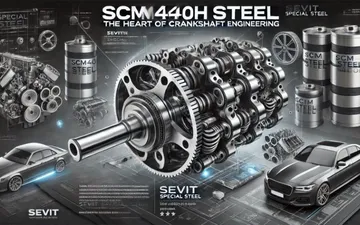
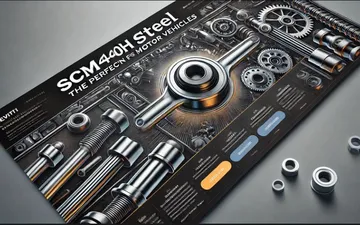
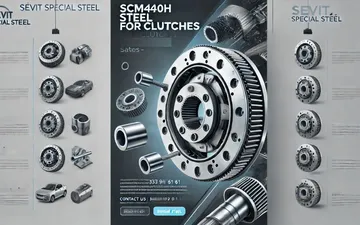
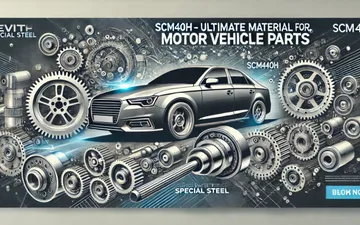
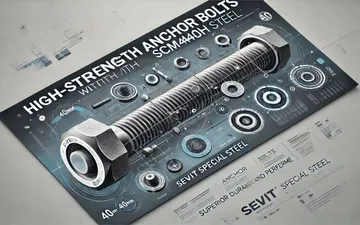
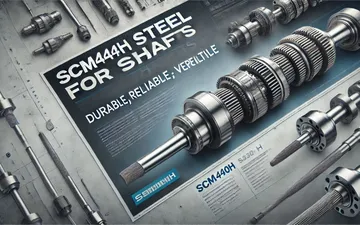
 Online
: 2
Online
: 2 Hits today
: 212
Hits today
: 212 Hits yesterday
: 153
Hits yesterday
: 153 Visits of the month
: 2721
Visits of the month
: 2721 Total access
: 1007704
Total access
: 1007704

